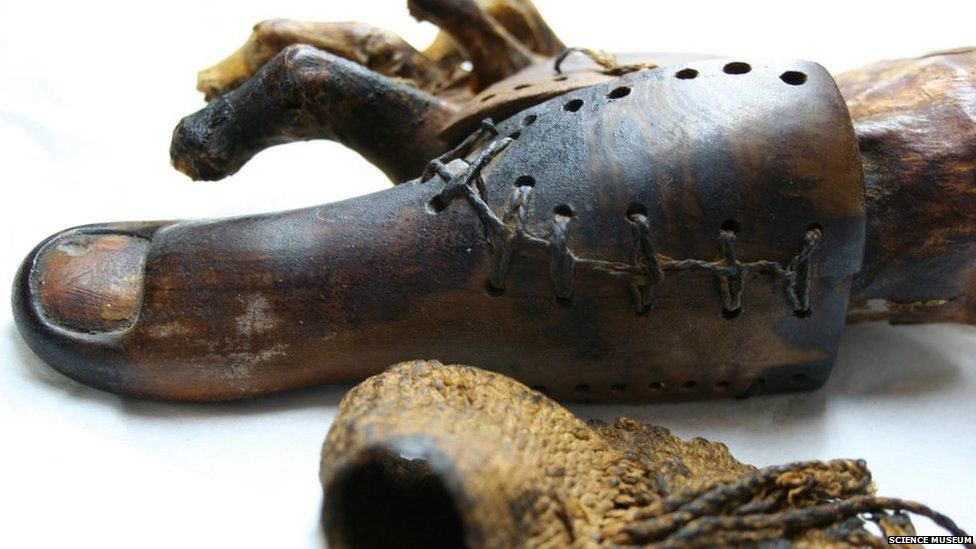In pictures: Prosthetics through time
- Published

"We're seeing the first glimpses of the development of prosthetic devices," says Dr Jacky Finch, who has analysed this Egyptian prosthetic toe. It dates to between 950-710BC and was found on a female mummy in a tomb near Luxor. There are earlier references to prostheses - Indian texts from 1,400BC talk about an iron leg, but this is the "earliest tangible piece of archaeological evidence".
A model of "the Capua leg", part of the Brought to Life exhibit at the Science Museum in London. Found in Italy, it was the oldest artificial leg excavated and dated to 300BC. The original was destroyed in an air raid during World War II.
Once thought to have belonged to a German knight, Gotz von Berlichingen, who lost his arm at the battle of Landshut in 1503 and had his armourer make a metal replacement. However, it has been shown that the knight lost his right arm, whereas this prosthetic is for the left.
This steel and brass arm dates back to between 1840 and 1940. Warfare was the most common reason for amputation at the time.
A fork is fitted into the palm of this replacement lower arm to help with eating.
This arm was designed for work in a factory. Four different hammers can be attached to the arm. It is thought the owner had a second arm to wear after work.
This heavy oak leg was made for a British merchant seaman after his ship was sunk during World War I. He was captured by a German ship, whose carpenter made the leg.
The third and little fingers are reinforced to increase strength while a cord closes the hand.
A prosthetic foot which laces around the lower leg - known as the Jaipur Foot. It was developed in India and can be made cheaply in under an hour.
Carbon dioxide gas cylinders power these two arms which were made for a 12-year-old boy. The gas canister was carried on the trouser belt.